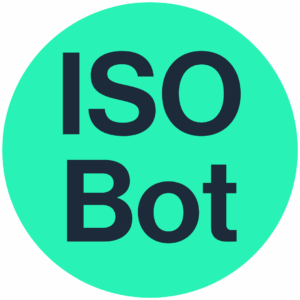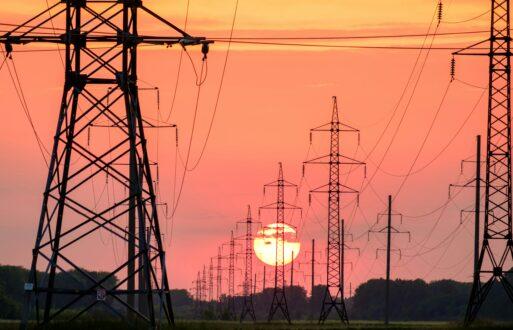Disclaimer: This blog post, which answers “What are the differences between PTDF and LODF, and when are they used in ISO/RTO markets?,” was generated using PCI’s ISO/RTO Documentation AI Chatbot, powered by ChatGPT. While the content is based on curated market documentation, it is intended for informational purposes only and may not reflect the most up-to-date or comprehensive information. We recommend verifying any key details directly with relevant sources before making business decisions.
For the latest answer to this question, generated live, visit our free ISO/RTO Documentation Chatbot.
When it comes to managing the flow of electricity across transmission networks in ISO/RTO markets, two critical tools come into play: the Power Transfer Distribution Factor (PTDF) and the Line Outage Distribution Factor (LODF). These factors are essential for understanding how power flows under normal conditions and during contingencies, helping grid operators maintain reliability and manage congestion effectively.
In this blog post, we’ll explore what PTDF and LODF measure, how they’re calculated conceptually, and how they’re used in transmission analysis and congestion management. By the end, you’ll have a clear understanding of how these factors keep the grid running smoothly and why they’re indispensable in ISO/RTO markets.
ISO/RTO Documentation Chatbot
Use our AI to search Business Practice Manuals from ISO/RTO markets at no cost.
What PTDF and LODF measure
Let’s start with what these two factors actually measure. PTDF and LODF are both tools used to analyze power flows, but they focus on different scenarios.
PTDF measures the percentage of a power transfer that flows through a specific transmission facility under normal operating conditions. Think of it as a way to predict how electricity will flow across the grid when power is injected at one point and withdrawn at another. It’s like mapping out the path of water through a network of pipes when all the valves are open and functioning normally.
LODF, on the other hand, measures the percentage of power that shifts to a monitored facility when another facility is taken out of service. It’s used to simulate the impact of outages, helping operators understand how the grid will respond if a transmission line or other facility goes offline. Imagine closing one valve in that same network of pipes and observing how the water reroutes itself.
How PTDF and LODF are calculated conceptually
The calculations behind PTDF and LODF might sound complex, but conceptually, they’re straightforward.
PTDF is calculated by determining the flow contribution on a transmission facility when power is injected at one point (a generator, for example) and withdrawn at another (a load or demand center). It’s expressed as a percentage of the total power transfer. For instance, if 100 MW of power is transferred and 20 MW flows through a specific facility, the PTDF for that facility is 20%.
LODF is calculated by analyzing the change in flow on a monitored facility when another facility is out of service. It’s the ratio of the flow change on the monitored facility to the flow on the out-of-service facility before the outage. For example, if a 100 MW line goes offline and causes a 20 MW increase in flow on another line, the LODF is 20%.
How PTDF and LODF are used in transmission analysis and congestion management
Both PTDF and LODF play vital roles in ensuring the reliability and efficiency of the grid, but they’re used in different ways.
PTDF in transmission analysis and congestion management: PTDF is a cornerstone of flowgate analysis, which is used to monitor and manage the flow of electricity through critical transmission paths. By identifying how power transfers affect specific facilities, grid operators can ensure that no facility exceeds its thermal, voltage, or stability limits. PTDF is also used in market operations to determine the impact of transactions on the grid and allocate congestion costs fairly among market participants.
LODF in transmission analysis and contingency planning: LODF is indispensable for contingency analysis, which involves simulating the impact of potential outages on the grid. By understanding how power flows will shift during an outage, operators can identify facilities that might become overloaded and take steps to mitigate the risk. LODF is also used in planning studies to evaluate the impact of new transmission projects on existing facilities, ensuring that the grid remains resilient as it evolves.
Why PTDF and LODF matter in ISO/RTO markets
In ISO/RTO markets, where electricity is traded and delivered across vast networks, maintaining grid reliability is a top priority. PTDF and LODF are critical tools for achieving this goal. They help operators anticipate and manage the flow of electricity under both normal and contingency conditions, ensuring that the grid can handle power transfers without exceeding its limits.
These factors also play a key role in congestion management, which is essential for maintaining fair and efficient market operations. By identifying and addressing potential bottlenecks, PTDF and LODF help prevent costly disruptions and ensure that electricity flows where it’s needed most.
Keeping the grid reliable and efficient
Understanding the differences between PTDF and LODF is essential for anyone involved in ISO/RTO markets. These factors provide the insights operators need to manage power flows, plan for contingencies, and keep the grid running smoothly. Whether you’re a market participant, a planner, or just someone curious about how electricity gets from point A to point B, knowing how PTDF and LODF work will give you a deeper appreciation for the complexity and reliability of our power systems.
For the latest answer to this question, generated live, visit our free ISO/RTO Documentation Chatbot.







